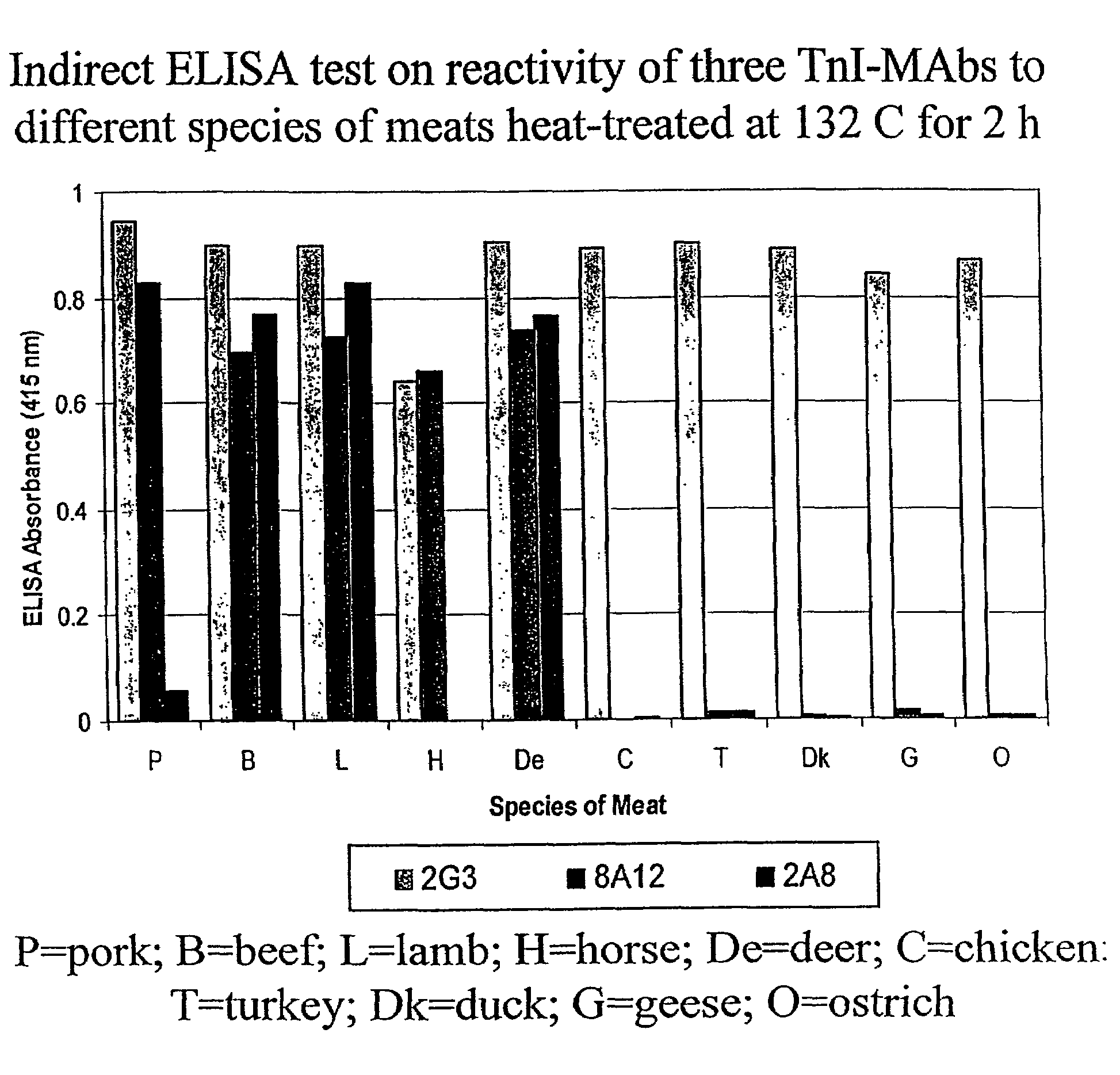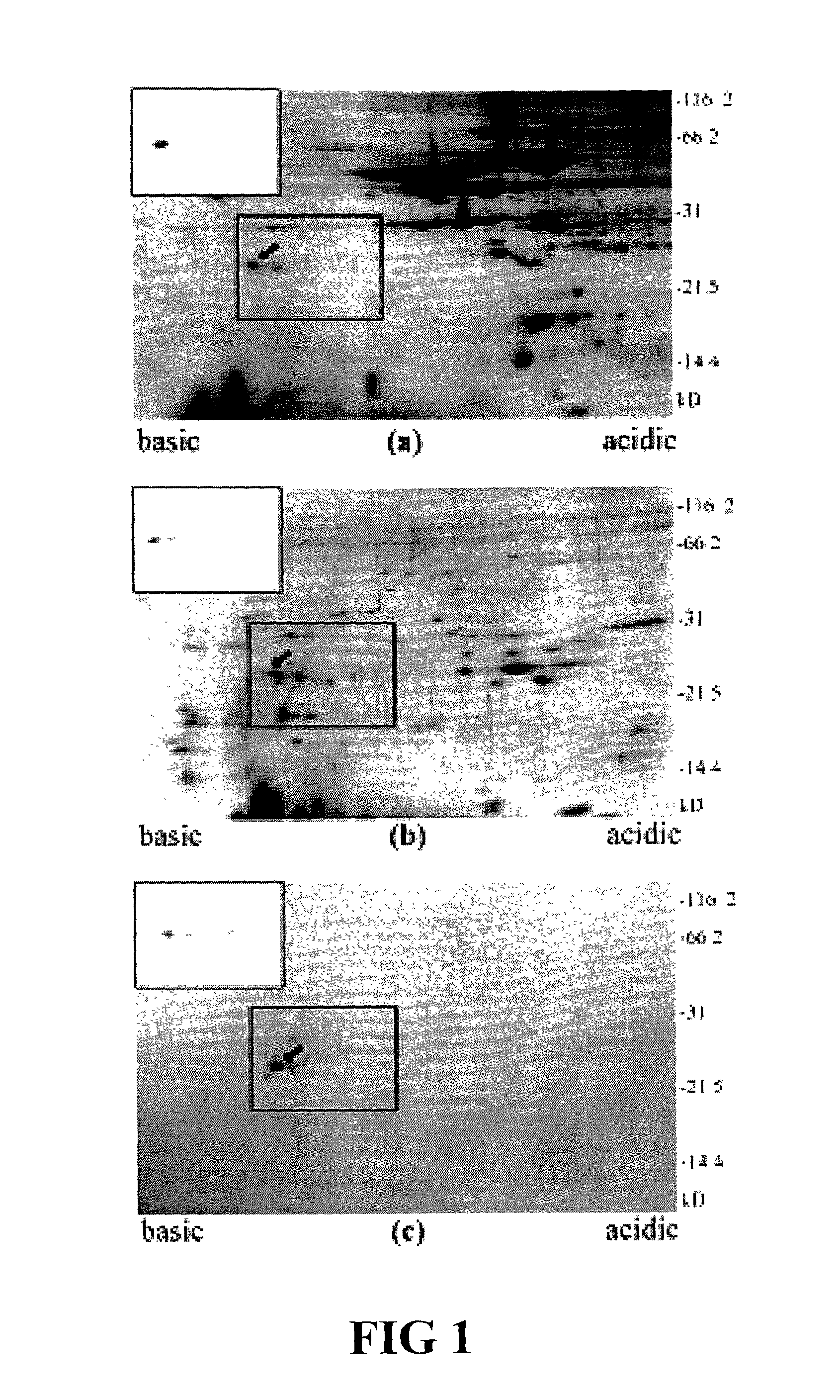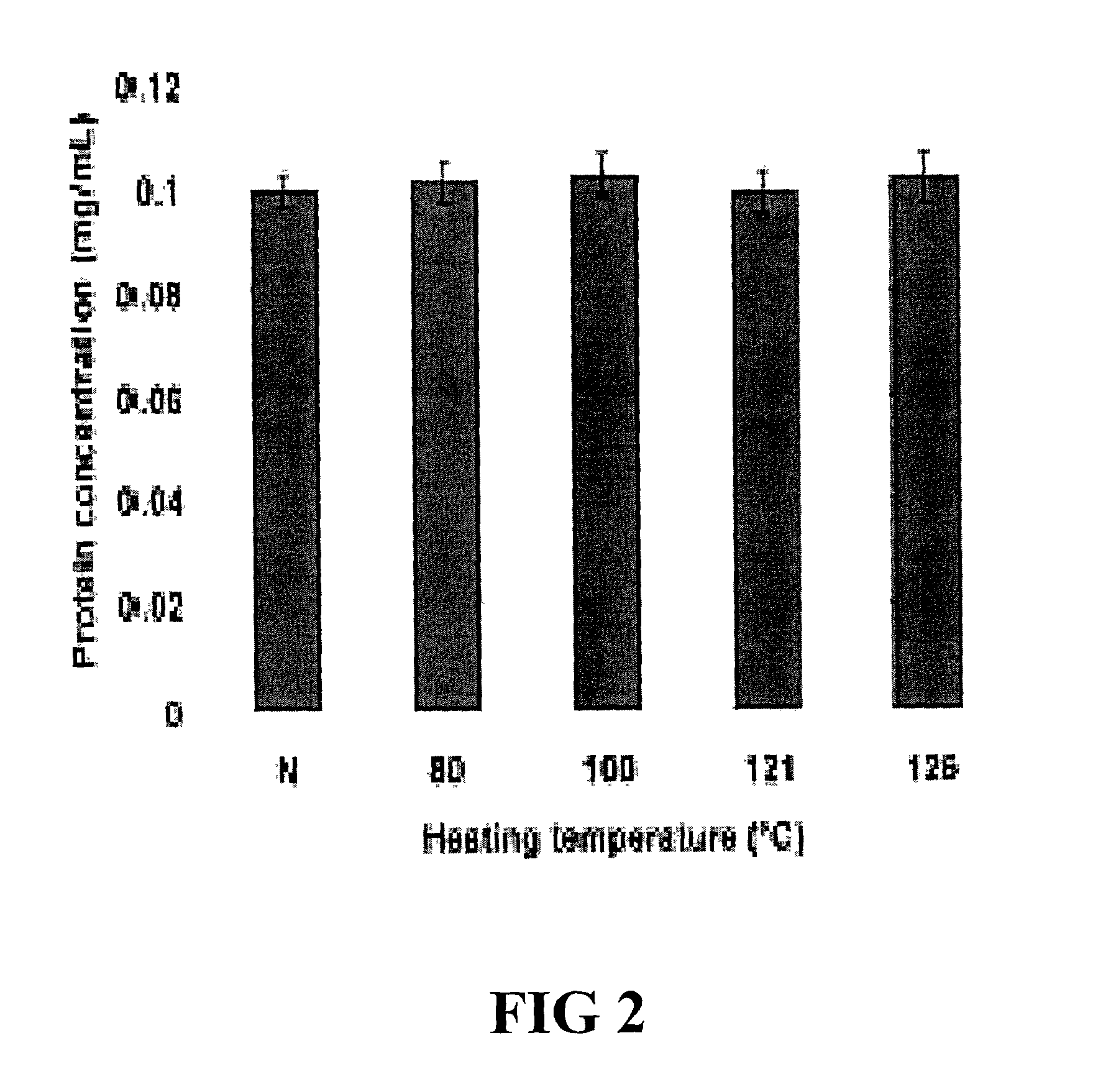Use of Troponin I as a species marker protein for meat speciation in both raw and heat-processed products
a technology of troponin and protein, which is applied in the field of monoclonal antibodies for the detection of meat species, can solve the problems of inability to use troponin for species identification of cooked meat, inability to obtain antiserum in large-scale testing, and simple sample preparation. , to achieve the effect of simple preparation and no expensive equipment or highly skilled operator
- Summary
- Abstract
- Description
- Claims
- Application Information
AI Technical Summary
Problems solved by technology
Method used
Image
Examples
example 1
Identification of TnI as a Thermostable Species Marker Protein
[0045]Applicants have previously produced several porcine-specific MAbs raised against crude porcine protein extract for the detection of pork in both raw and cooked meats. See Chen et al. (1998) J. Food Sci. 63(2):201-205. See also U.S. Pat. No. 6,288,215 and U.S. patent application Ser. Nos. 09 / 225,141 and 09 / 963,986, each of which is incorporated herein by reference. These MAbs, particularly MAb 5H9, recognize a 24 kD thermostable skeletal muscle protein (TSMP) which is porcine skeletal-muscle specific. Applicants theorized that the purified protein could serve as an ideal marker for meat speciation and detection. Recently, Applicants identified the porcine protein as a member of the Troponin complex (TnI, TnC, and TnT), Chen et al. (2001) J. of Food Sci. 66(6):799-803, specifically porcine TnI. See also Chen et al. (2002) Meat Sci. 61:55-60.
[0046]The following example demonstrates the thermostability of TnT and its us...
example 2
Generation of Monoclonal Antibodies to TnI
Purification of TnI
[0058]Purification of TnI was carried out as described in Example 1, above.
Immunization
[0059]Bovine TnI (1.0 mg / ml) dissolved in phosphate buffered saline (PBS, 0.01 M sodium phosphate and 0.15 M sodium chloride, pH 7.2) containing 0.3% of SDS was heated in boiling water for 30 min. Four BALB / c mice (7-10 weeks old) were immunized either subcutaneously or intraperitoneally with 150 mg of the heat-treated TnI mixed 1:1 (v / v) with Freund=s complete adjuvant followed by two booster injections at 4-week intervals with 100 mg / mouse of TnI mixed 1:1 (v / v) with Freund=s incomplete adjuvant.
Production of Monoclonal Antibodies
[0060]Test sera were collected by tailbleeding 10 days after each injection; the titer of the sera was then determined by indirect ELISA. The mouse exhibiting the highest serum titer to bovine TnI then received a final boost of 100 mg of the antigen in PBS, 4 days before the fusion. After the final booster, th...
example 3
Adulteration of Feed Samples
Materials and Methods
Purification of TnI
[0074]Purification of TnI was carried out as described in Example 1, above.
Immunization
[0075]Immunization was carried out as described in Example 2, above.
Production of Monoclonal Antibodies
[0076]The monoclonal antibodies used in Example 2, above, were used in the present experiment.
ELISA
[0077]Primary and secondary screening were carried out as described in Example 2, above.
[0078]The assay was further optimized for the detection of muscle tissue in feed samples. The microplates were coated with extracts from meat meals or feed samples diluted 1:20 (v / v) in carbonate buffer and blocked with 1% of BSA in PBS. MAb 2A8, or an alternative, diluted in antibody buffer (1 mg / ml) were added to the wells and incubated at 37° C. for 1 h. The rest of the procedures were the same as described above.
SDS-PAGE and Western Blot
[0079]Sodium dodecyl sulfate-polyacrylamide gel electrophoresis (SDS-PAGE) was carried out as described in ...
PUM
 Login to View More
Login to View More Abstract
Description
Claims
Application Information
 Login to View More
Login to View More - R&D
- Intellectual Property
- Life Sciences
- Materials
- Tech Scout
- Unparalleled Data Quality
- Higher Quality Content
- 60% Fewer Hallucinations
Browse by: Latest US Patents, China's latest patents, Technical Efficacy Thesaurus, Application Domain, Technology Topic, Popular Technical Reports.
© 2025 PatSnap. All rights reserved.Legal|Privacy policy|Modern Slavery Act Transparency Statement|Sitemap|About US| Contact US: help@patsnap.com



